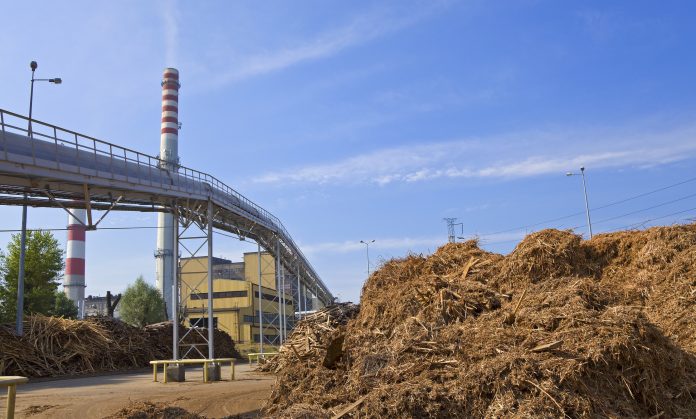Sasha Stashwick, Senior Advocate at the Natural Resources Defense Council (NRDC) highlights the three most common sustainability claims from the biomass industry
Countries around the world are seeking alternatives to fossil fuels. Genuine zero-emission renewable energy technologies like solar and wind are cheaper than ever and deploying fast. However, one energy source gets wrongly grouped with the others: biomass.
Biomass refers to burning plant matter for energy. It’s particularly harmful to the environment when biomass from forests—aka trees—is burned for electricity. Harvesting wood for energy production worsens climate change immediately, and the harm it causes can persist for many decades or even centuries. It also endangers the very ecosystems that help stabilise global temperature rise and make communities more resilient to climate change. Biomass proponents argue that so long as trees are sourced “sustainably,” policymakers can ignore these impacts. The reality is that their sustainability claims greenwash climate pollution and forest destruction.
The biomass industry uses three principal tactics to pull the “sustainability” veil over its operations. First, the industry emphasises that it only sources from “working,” or “managed” forests or those with “sustained yield” management practices. Second, it touts that its biomass has been certified under a sustainable forestry scheme, such as the Sustainable Biomass Programme (SBP). Third, it assures policymakers that the wood burnt is “waste,” “low grade” or otherwise “unmerchantable.”
Exploring these tactics further:
Sustainability claim #1: Biomass harvests that don’t exceed forest growth can be treated as carbon neutral
The biomass industry claims that if biomass harvest doesn’t exceed forest growth in a sourcing area, climate policies can count the electricity generated when that biomass is combusted as “zero-carbon” or carbon beneficial—in essence treating a biomass-burning power plant as it would a solar or wind installation. This assumption is erroneous and has been soundly debunked by scientists.
Sustainable forestry may be based on ecological and other management considerations, but carbon accounting isn’t one of them. Even when forest growth and removals are considered, sustainability criteria don’t fully account for net changes in carbon emissions from forest biomass—i.e. what would have happened to forest carbon had the forest been allowed to continue growing—and cannot be justified scientifically as a proxy for carbon accounting.
Per unit of energy, all existing biomass power plants emit more CO2 from their smokestacks than coal plants. Thus, replacing coal with forest biomass increases CO2 levels in the atmosphere. On the landscape, replacing older trees with saplings reduces the amount of carbon stored in the forest, even under the best-case scenario where trees are replanted immediately and kept intact. Altogether, this means it can take decades or more for biomass energy systems to even begin to deliver any climate benefits.
The worst impacts on the climate come when biomass plants burn whole trees. But even when biomass energy is generated by burning genuine forestry residues, the result is still more climate pollution for decades—far outside critical timeframes to slash emissions and limit global warming.
Sustainability claim #2: “Green” claims and sustainability certifications
Years of on-the-ground investigations in the forests of the U.S. Southeast—the main sourcing grounds UK biomass imports—have exposed the ugly realities of biomass supply chains, including routine sourcing biomass from clearcuts of mature hardwood forests. They’ve also shown the vast quantities of whole trees getting converted into pellets to be shipped around the world as fuel. With these, it’s hard to conclude that burning forest biomass for energy is good for the environment. However, the biomass industry’s self-made sustainable certification scheme attempts to provide some “green” cover.
The SBP, used by wood pellet manufacturing giants like Enviva and their top customers, such as Drax Power in the UK, to certify their biomass, was created in 2013 by biomass companies to provide assurances that their wood pellets and other biomass fuel are sustainable and legally sourced. From the start, this certification scheme was dominated by industry and built using a self-policing approach that’s resulted in increased carbon emissions, accelerated loss of natural forests, and harm to local communities. It amounts to little more than a smokescreen for forest destruction.
It’s not just that the SBP is like leaving the fox to guard the henhouse. None of the sustainable forestry certifications programmes, including those considered best-in-class, contain a carbon accounting mechanism. It’s simply not what they were created for. As such, “sustainable forestry” or “environmentally sustainable” practices, while plausibly beneficial for timber management or ecosystem/wildlife protection, cannot provide evidence that biomass harvested for energy production is carbon-beneficial.
Sustainability claim #3: The biomass industry only burns “waste” trees
The biomass industry’s final tactic is to assure policymakers that the wood it burns is just “waste wood,” “low grade wood,” or otherwise “unmerchantable.” In fact, feedstock categories that have become codified in biomass regulations are carry-overs from an entirely different industry. This jargon may make sense in the context of traditional forest products—lumber, pulp and paper, plywood, etc.—but these terms were never intended to communicate anything whatsoever about the carbon emissions impact of burning different types of woody biomass in the context of energy production or climate policy. What is a “waste,” “residue,” or otherwise “low-value” wood product in traditional forest product markets still emits CO2 when burned as fuel for electricity generation, and it’s scientifically indefensible to assume otherwise.
Further, when you decode industry jargon, many of the terms are synonyms for trees. Yet, these feedstocks make up the bulk of what biomass power stations are burning. According to its own 2018 annual report, “thinnings” and “low grade roundwood”—aka trees—made up half of the biomass imported by Drax, the majority of which is imported from the U.S. Southeast (60%).
The bottom line is that if policymakers are looking to “sustainability” claims to provide assurances about the carbon benefits of forest biomass, they are barking up the wrong tree. Burning forests cannot reduce emissions compared to burning fossil fuels within a timeframe that could avert the worst of climate change. What can? Investment in genuinely clean and renewable energy and an ambitious global agenda to protect, restore, and expand forests and other natural ecosystems.












We support increasing markets for forest biomass because without low grade markets we cannot practice great forestry. This article is totally untrue.
You’re cutting down North American forests, grinding, chipping, heating and compressing them into pellets with half the BTUs of coal (twice as many trucks, trains and ships) transporting it to Europe where they declare it “carbon neutral” only the rich people’s kids of the Church of Climate could be this hypocritical.